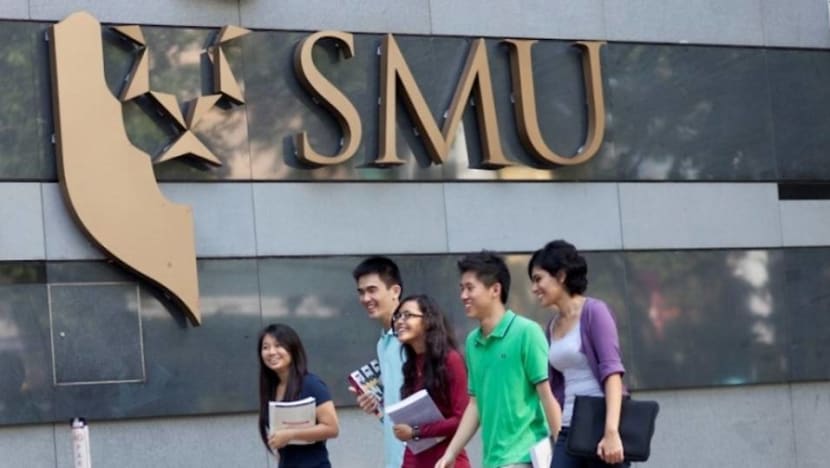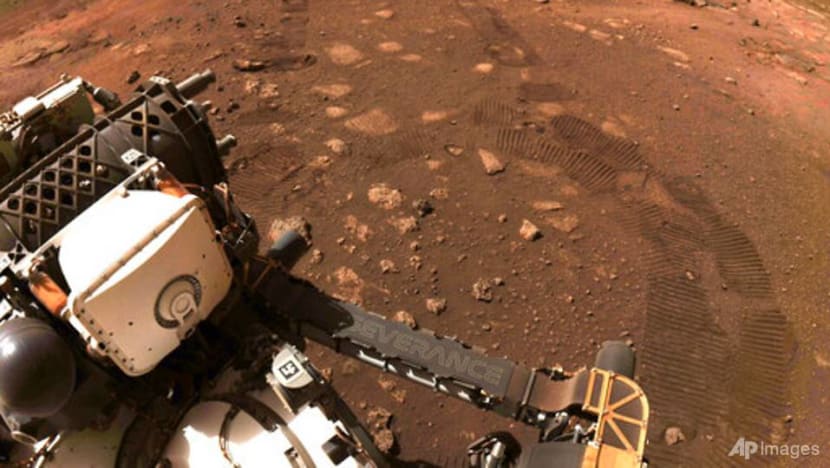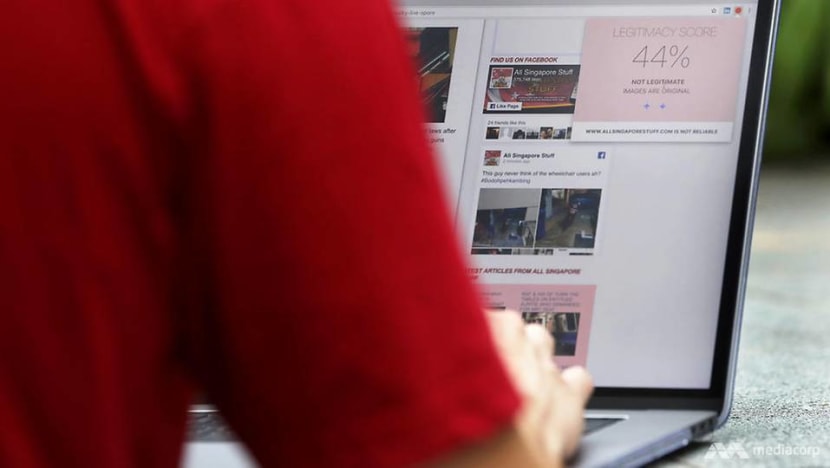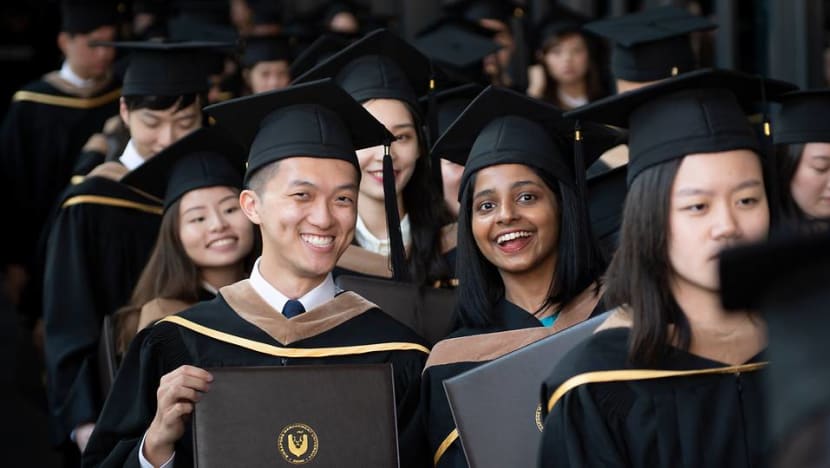commentary Commentary
Commentary: Higher learning institutes need to change strategies to groom IT talent
The demand for deep tech is only going to grow and the only way for Singapore to produce local talent is to change the way we teach digital skills, says the Dean of SMU’s Computing school.

Students walk by the Singapore Management University. (Photo: Singapore Management University)
SINGAPORE: A monumental event happened in 2017 when a computer programme AlphaGo beat the world champion Ke Jie in a game of Go.
It was a sign of how far artificial intelligence (AI) has come, with unimaginable implications for a wide variety of fields.
The episode has been widely cited as the moment that sparked China to go all in on AI.
There is a similar push at home. Singapore’s Research, Innovation and Enterprise (RIE) 2025 plan calls for an investment of S$25 billion into science and technology research to develop four key areas – manufacturing, trade and connectivity; human health and potential; urban solutions and sustainability; and smart nation and digital economy.
The plan is expected to boost Singapore’s research and development capability in deep tech, including IT, while spurring the digital innovation of Singapore-based enterprises.
Commentary: COVID-19 could redefine Singapore’s place in the global economy
Commentary: How Singapore will remain a top trading hub in a post-pandemic world
This evolving landscape demands computing professionals with deep technical expertise; as well as professionals in other domains such as accounting, law, business and social sciences with enough computing knowledge to work with technology in their respective domains.
The higher education sector has to rise to the challenge of grooming computing talent and equipping the local workforce to power the nation on this journey.
EVOLVING TRENDS IN COMPUTING
From artificial intelligence to cybersecurity, computing is advancing rapidly. Higher education must produce IT professionals in tune with the dominant themes in these advances, which include a few key things.
First, from settings with minimal or controlled external interactions like backend claims processing in an organisation, computing solutions are increasingly deployed as mission-critical, autonomous agents in open environments. An example is the NASA rovers that managed their own treacherous descent to the surface of Mars.

Open environments require more complex logic, data and control. Designers may not even be able to anticipate all the possible situations that could happen.
The unpredictability is especially high where machines operate among humans who do not always act rationally or consistently, such as autonomous vehicles that share the road with humans and human drivers.
Second, while conventional software is logic-driven, recent machine learning models are data-driven. But given training data that are not representative of the real world, the resulting models could embed bias that are not apparent until they are in operation.
One example is COMPAS (Correctional Offender Management Profiling for Alternative Sanctions) which was used in US court systems to predict a defendant’s likelihood of re-offending.
READ: Commentary: Self-driving buses and delivery robots welcomed but who do we blame if AI goes rogue in Singapore?
A related concern is that the model could be attacked by manipulating its training data or presenting it with input data not seen during training.
Finally, computer software behaves the same way on the same input, like how a washing machine functions. Given how our environment is continually changing, the software will gradually deteriorate in performance and require periodic recalibration.
To avoid that pitfall, constructing models in Artificial Intelligence that continue to learn and evolve in real-time, like Google’s AlphaGo, will be a necessity.
RAISING THE GAME BY COMBINING EXPERTISE
These themes will raise the sophistication of computing solutions and demand deeper professional expertise from the IT specialists who create and maintain these solutions.
To build compelling solutions, technologists must account for a host of considerations beyond computing, spanning user behaviours, business reality and societal norms. Computing schools must respond with curricula that ensure students acquire breadth in some of those subjects along with technical depth in computing.

Universities have begun the adjustment, though some are further along than others.
The bigger challenge, though, is a concerted effort by businesses, government and education institutions to induce a mindset change in society, a large segment of which still favours traditional education in a classical discipline with scant attention to its interfaces with other professions in practice.
One computing programme that incorporates multidisciplinary breadth is the Computing and Law degree at the Singapore Management University (SMU). It is the first of its kind. Why this combination?
Companies do need deep capabilities in cutting edge technologies but they also worry about how their innovations can be protected legally – including making sure they comply with regulatory and contractual obligations. There is also the question of business risk from innovation.
READ: Commentary: Hire an arts graduate to formulate business strategy. Why not?
The education programme is jointly designed and delivered by the School of Computing & Information Systems and the Yong Pung How School of Law, as crafting a curriculum that is deemed to be academically rigorous by both disciplines is a necessity.
Co-crafting curriculum is one challenge. Both schools also have to commit to joint research and curriculum development in step with the knowledge which is constantly evolving, to ensure that students get a robust pairing of both technology and legal aspects.
READ: Commentary: What’s behind Grab’s reported SPAC listing
COMPUTING EDUCATION IN NON-COMPUTING DISCIPLINES
In order to meet Singapore’s RIE 2025 objectives, digitalisation should be driven primarily by disciplinary leaders and experts who redesign the processes and job roles in their own professions, not by computing specialists pushing technology at the former.
That is why incorporating computing in the syllabi of higher education in general, including natural science, social science and business studies is gaining traction.
Since a degree programme includes a fixed number of course credits, and in any case most students are reluctant to delay their graduation, more computing courses often leave students with fewer courses in their own disciplines.
This trade-off needs to be managed carefully, so students graduate with the necessary disciplinary depth. The question is how many computing courses and what topic coverage is needed for it to be meaningful, and how students can meet prerequisites without first having to complete many foundational courses.

Even when a decision is made to customise courses for non-computing disciplines, students attending these courses will still have diverse background and interests. This poses several challenges, like how to contextualise computing so that students can find relevance to their own disciplines.
The plethora of expected learning outcomes, from mere appreciation of computing capabilities and concerns, to being cross-trained in computing, further complicate the task of curriculum design. Institutes of Higher Learning (IHLs) need to provide academic counselling support to students and, concurrently, carefully curated curricula that cater to broad categories of learning outcomes.
With an undergraduate degree programme that spans three to four years of study, there is sufficient scope to cater for different learning outcomes by allowing students to combine their disciplinary specialisations with a second major or even double degree in computing.
That is supported to different extents at the local universities: At SMU, students are free to pursue any combination of double degrees and first and second majors. But other universities may have more restrictions.
READ: Commentary: Three literacies to level up Singapore’s disruption game
READ: Commentary: Arts and humanities can set you up for life in post-coronavirus world
HIRING AND REWARDING FACULTY HAS TO CHANGE
Whether computing or non-computing majors, striking a balance between discipline depth and multi-discipline breadth in the curriculum is merely a start. The end-goal must be to help our students synthesise computing skills with knowledge of business and social science, to enable them to create technology-enabled solutions for business and individuals.
To do so, IHLs have to hire and reward faculty who can bring such interdisciplinary know-how to their classes, and to motivate faculty to collaborate across disciplines. But there are systemic hurdles in the way.

On the part of the professors, globally established criteria for tenure and promotion compel them to establish their academic contributions within their respective disciplinary communities, and these communities are not usually set up to assess interdisciplinary research.
Moreover, research excellence within individual subject disciplines determine university subject rankings, which the public still pays attention to. There is no easy solution to this dilemma. But, given the stakes involved, we must be prepared to push the envelope.
IHLs will have to find their own balance of the conflicting considerations in fulfilling their research and education missions.
Professor Pang Hwee Hwa is Dean of School of Computing and Information Systems, at the Singapore Management University.















